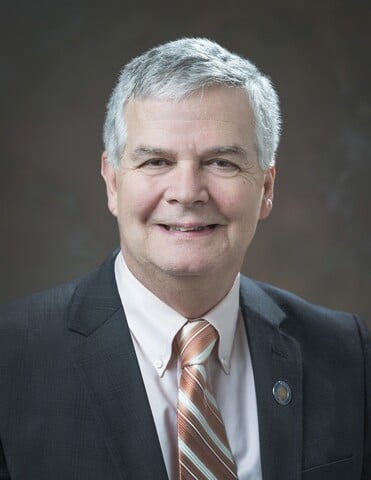As deer season opens and Wisconsinites flock to the woods to sit in tree stands for their yearly ration of venison, conversation turns not just to hours spent outside, but also about the spread of chronic wasting disease (CWD).
The story of CWD is a gruesome one. Similar to Mad Cow Disease, CWD causes abnormalities in an animal’s appearance and behavior before inevitably leading to its death. In the 1970s, wildlife veterinarian Beth Williams noticed odd lesions on the brains of necropsied deer and elk and identified them as a transmissible spongiform encephalopathy. The first signs of the disease are difficulties in movement, leading those with a more dramatic turn of phrase to call them “zombie deer.”
CWD is an always-fatal transmissible neurological disease affecting cervids like deer, moose and elk. It’s transmitted directly through animal-to-animal contact and indirectly through contact with objects or environments containing contaminated material, like carcasses, saliva, urine or feces. CWD spreads through what is called a “prion,” a protein that can trigger normal proteins in the brain to fold abnormally. Prions can live in soil and plants, and carcasses left in the woods can spread the disease long after an animal’s death of an animal. No cases have yet been found in humans, but there are documented instances of the disease making the jump to other primates.
After CWD’s discovery in 1978, it spread quickly. In 1981 it was found in wild herds in Colorado. In the nineties it was found in captive herds in Saskatchewan. By 2000 CWD was found in animals in Oklahoma and Nebraska. In 2001, the first recorded instance of CWD infecting a white-tailed deer occurred in South Dakota.
Wisconsin had its first recorded case of CWD in 2002. At first the disease affected herds in southern Wisconsin, CWD made its slow, inevitable way up to our area of western Wisconsin starting with two cases in Eau Claire in 2018 and spreading to animals in Dunn, Buffalo and Trempealeau counties.
Recent data from the Department of Natural Resources (DNR) show that CWD continues its spread. Just last month a wild deer tested positive for CWD in Trempealeau County. So far this year, two deer have tested positive in Eau Claire County. In 2022, there were six confirmed positives in Senate District 31: one in Eau Claire County, one in Dunn County and four in Buffalo County.
This is troubling because many of these cases are in deer from wild populations. If left unchecked, CWD will spread faster, kill more deer and threaten our ability to preserve Wisconsin’s deer hunting legacy.
It’s vital that we stay on top of the spread of CWD in western Wisconsin. Otherwise, these numbers could skyrocket, as has happened in many counties to the south. Successful management of the CWD epidemic depends on research, testing and disposal.
Research into the issue has been ongoing since Beth Williams first observed CWD back in the seventies. Recent research has yielded best practices for wildlife management and limiting the spread of CWD. If you’re hunting this season, you can help us better understand the scope and shape of the CWD epidemic. The DNR, in partnership with biologists and scientists across the world, have been collecting data about the spread of CWD. Currently, hunters can submit samples for free testing at kiosks across the state (find one near you here).
Many Wisconsin hunters are already doing what they can to contribute to the long-term health of our deer herds. But sampling kiosks, carcass disposal sites and personnel all cost money. This week, I’m once again introducing legislation focusing on CWD research, testing and disposal with my colleague Representative Kristina Shankland (D-Stevens Point). This legislation provides vital funding and gives direction for our state’s response to this widespread health hazard.
The down payment we make now on testing and transmission prevention efforts is a small price to pay compared to the immeasurable amount we stand to lose if we aren’t vigilant about CWD. The white-tailed deer herd has always been an integral part of Wisconsin’s hunting heritage, contributing to our local economies and tourism industry. I’m proud to re-introduce legislation to keep our herds healthy for generations to come.
Senator Smith represents District 31 in the Wisconsin State Senate. The 31st Senate District includes all of Buffalo, Pepin and Trempealeau counties and portions of Pierce, Dunn, Eau Claire, Jackson and St. Croix counties.


Add new comment